Alum may just become your favorite spice cabinet survival tool once you realize how effective it is at water purification. Alum salt, also known as potassium alum (potash alum) or aluminum sulfate, has been used for centuries not only for its keen preservation properties but also for its prowess at purifying water.
If you are a canner, you’re already quite familiar with how helpful alum is during the food preservation process. By adding alum to pickling brine it helps maintain the crispness and freshness of fruits and vegetables. The many wonders of alum do not end there, folks. Alum may help relieve symptoms of canker sores and promote oral hygiene. By dissolving alum in water and using it as a mouth rinse, it can help reduce inflammation and soothe oral irritations.
Alum salt is a powerful water purification agent that has been used for centuries to treat water and improve its quality. When added to water, alum binds to the particles and forms larger clumps that can easily be filtered out. This can help improve both the taste and clarity of drinking water while making it safer for consumption. Additionally, alum is effective in removing excess phosphates and other contaminants that can contribute to water pollution. This is why aluminum sulfate is frequently used in improving the quality of lake water.
The Science Behind Alum Salt
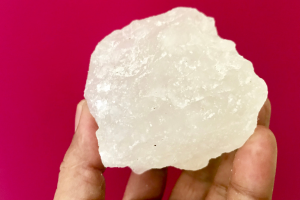 To understand how alum salt works as a water purification agent, it’s important to delve into its chemical composition.
To understand how alum salt works as a water purification agent, it’s important to delve into its chemical composition.
The chemical composition of alum salt, or potassium aluminum sulfate, is integral to the water purification process.
Alum salt is a hydrated sulfate salt, which means it contains sulfate ions (SO4) and water molecules (H2O) in its crystal structure.
The crystal structure of alum salt consists of potassium ions (K+) surrounded by sulfate ions (SO4) and water molecules. The presence of the sulfate ions allows alum salt to form strong bonds with impurities in water, while the water molecules contribute to the solubility and stability of the compound.
Alum salt, or potassium aluminum sulfate, has the chemical formula KAl(SO4)2·12H2O. It is a hydrated sulfate salt that consists of potassium, aluminum, sulfur, and oxygen atoms. Alum salt is usually sold as a fine white powder or in crystal form.
The production process of alum salt involves adding potassium sulfate to a concentrated solution of aluminum sulfate. The resulting reaction leads to the formation of potassium aluminum sulfate crystals. These crystals are then crushed into a powder or shaped into larger crystals for various applications.
How Alum Salt Works in Water Purification
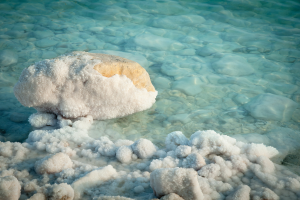 Alum salt works as a water purification agent through a process called coagulation. When alum salt is added to water, it releases positively charged aluminum ions (Al3+). These ions attract and bind with negatively charged impurities, such as suspended particles, organic matter, and bacteria, in the water.
Alum salt works as a water purification agent through a process called coagulation. When alum salt is added to water, it releases positively charged aluminum ions (Al3+). These ions attract and bind with negatively charged impurities, such as suspended particles, organic matter, and bacteria, in the water.
This process causes the impurities to clump together and form larger particles, a process known as flocculation. These larger particles then settle to the bottom of the water container or can be easily filtered out, resulting in clearer and purer water. There is also this DIY off-grid water filter the Amish people use and it proved indispensable for hundreds of years.
Benefits of Adding Alum Salt to Your Water
Adding alum salt to your water offers several benefits for both your health and the quality of your water. Here are the key benefits of using alum salt for water treatment:
- Alum salt helps remove suspended particles, sediments, and turbidity from water, resulting in clearer and visually appealing water.
- The coagulation properties of alum salt can effectively remove organic matter, bacteria, and other impurities from water, improving its overall purity.
- Alum salt can help reduce the presence of harmful bacteria and microorganisms in water, making it safer for drinking and other uses.
Health Benefits Associated with Alum-Treated Water
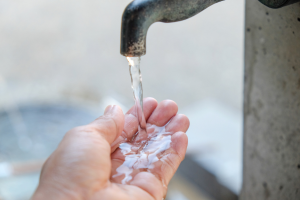 In addition to improving water clarity and purity, alum-treated water offers several health benefits.
In addition to improving water clarity and purity, alum-treated water offers several health benefits.
Here are some health benefits associated with alum-treated water:
- Reduced risk of waterborne diseases: Alum-treated water has a lower presence of harmful bacteria and microorganisms, reducing the risk of waterborne diseases such as cholera and Typhoid Fever. Those seemingly deadly illnesses of yesteryear could quickly reappear is during a long-term SHTF.
- Improved digestive health: Drinking water treated with alum can help maintain a healthy digestive system by removing impurities and potential contaminants.
- Enhanced hydration: With clearer and purer water, drinking alum-treated water can improve hydration levels and support overall bodily functions.
Related: 50 Survival Uses For Salt
It’s important to note that alum-treated water is safe for consumption and poses no significant health risks. The small dosage of alum used in water treatment does not introduce harmful levels of aluminum or potassium sulfate into the water.
Historical Uses of Alum Salt
Throughout history, alum salt has played a significant role in various applications, including water treatment. Its unique properties and effectiveness in purifying water have been recognized by ancient civilizations and medieval medicine. This is a glimpse into the historical uses of alum salt:
- Ancient civilizations, such as the Egyptians and Romans, used alum salt as an effective water purification agent.
- There is also a traditional way of making salt from plants. You can find all about the process here.
- Alum salt was used in medieval medicine as an astringent and antiseptic, with applications ranging from wound healing to oral care. It was applied topically for wound healing, to stop bleeding, and as a treatment for various skin conditions.
Practical Guide to Using Alum Salt
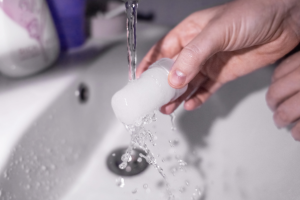 Determine the water volume: measure the volume of water you need to treat, whether it’s a large container or a specific amount for drinking.
Determine the water volume: measure the volume of water you need to treat, whether it’s a large container or a specific amount for drinking.- Calculate the dosage: refer to dosage guidelines based on the water volume. Typically, the recommended dosage is 1-3 grams of alum salt per liter of water.
- Dissolve alum salt: dissolve the calculated amount of alum salt in a small amount of water, ensuring it is fully dissolved before adding it to the water to be treated.
- Add alum salt to water: pour the dissolved alum salt solution into the water you want to treat, stirring gently to ensure thorough mixing.
- Allow settling or filtration: let the treated water settle for a period of time to allow the impurities to settle to the bottom. Alternatively, you can use a filtration system to remove the larger particles.
- Use treated water: once the settling or filtration process is complete, you can use the treated water for various purposes, including drinking, cooking, and hygiene.
How Much Alum to Use for Water Treatment
The dosage of alum salt for water treatment depends on the volume of water you need to treat. Here’s a text table providing dosage guidelines based on water volume:
| Water Volume | Alum Salt Dosage |
| 1 liter | 1-3 grams |
| 1 gallon | 4-12 grams |
| 10 gallons | 40-120 grams |
| 100 gallons | 400-1200 grams |
These dosage guidelines are approximate values and may vary depending on the specific water quality and impurity levels.
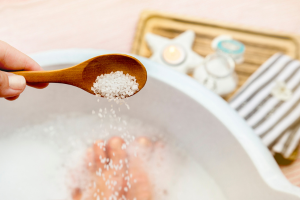 It is recommended to start with a lower dosage and adjust as needed based on the desired water clarity and purity.
It is recommended to start with a lower dosage and adjust as needed based on the desired water clarity and purity.
Always refer to the manufacturer’s instructions for precise dosage recommendations for the specific alum salt product you are using.
Alum Safety Considerations and Best Practices
While alum salt is generally safe to use for water treatment, it’s important to observe safety considerations and best practices to minimize any potential risks.
Here are some key safety considerations when handling alum salt:
- Avoid inhalation: When working with alum salt in powder form, avoid inhaling the powder to prevent respiratory irritation. Wear a protective mask or work in a well-ventilated area.
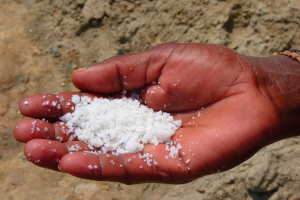 Avoid contact with eyes and skin: Alum salt may cause irritation if it comes into contact with the eyes or skin. If contact occurs, rinse thoroughly with water and seek medical attention if necessary.
Avoid contact with eyes and skin: Alum salt may cause irritation if it comes into contact with the eyes or skin. If contact occurs, rinse thoroughly with water and seek medical attention if necessary.- Store in a dry place: Keep alum salt in a dry, cool place away from moisture to prevent clumping or degradation. Ensure the container is tightly sealed to maintain its efficacy.
- Keep out of reach of children: Store alum salt out of the reach of children to prevent accidental ingestion or misuse.
- Overdosing: Using excessive amounts of alum salt can lead to over flocculation, resulting in water that is too clear and may lack essential minerals. Follow dosage guidelines and avoid using more than the recommended amount.
- Allergic reactions: Some individuals may be allergic to alum salt and may experience skin irritation or other allergic reactions. If you have a known allergy to alum salt or experience any adverse reactions, discontinue use and seek medical advice..
Alum Salt vs. Chlorination
Alum salt and chlorination are both effective in water purification, but alum salt is more commonly used for clarification and removal of suspended particles, while chlorination primarily targets microorganisms.
The Alum salt is primarily used for clarification and removal of suspended particles, sediments, and turbidity in water. It can improve water clarity and remove organic matter but is less effective against microorganisms. Alum salt is cost-effective, easy to use, and suitable for larger volumes of water. Speaking of large volumes, this is how you can make a pressurized rainwater harvesting and purification system in your own backyard.
Chlorination is a widely used method for disinfection and killing harmful microorganisms in water. It effectively eliminates bacteria, viruses, and pathogens but may not effectively remove suspended particles or improve water clarity. Chlorination requires careful dosage control and may have a residual taste and odor in treated water.
Alum vs. Modern Water Filters
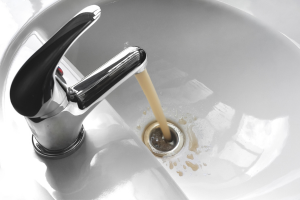 Alum salt provides a cost-effective and efficient solution for water treatment, especially for larger volumes. Modern filters, on the other hand, offer convenience and versatility for smaller-scale water treatment.
Alum salt provides a cost-effective and efficient solution for water treatment, especially for larger volumes. Modern filters, on the other hand, offer convenience and versatility for smaller-scale water treatment.
The Alum salt is highly efficient in clarifying water, removing suspended particles, sediments, and turbidity. It is cost-effective, easy to use, and suitable for larger volumes of water. However, alum salt may not effectively remove microorganisms and may require additional treatment methods for complete disinfection.
Related: Never Trust This Water Source Again
Modern water filters, such as activated carbon filters or reverse osmosis systems, offer greater versatility and precision in water treatment. They can effectively remove suspended particles, microorganisms, and even specific contaminants or chemicals. Modern filters provide a higher level of water purification but may be more expensive and require regular maintenance. They take up far more space to stockpile than spice bottles filled with alum. That’s why you should try a device that helps you make water out of thin air. I have one at home and I was amazed of how much water it produces.
Environmental Impact of Using Alum Salt
Alum salt usage can have some impact on aquatic life and ecosystems, primarily due to the release of aluminum ions in water. High concentrations of aluminum ions can be toxic to certain species of aquatic organisms.
To minimize the environmental impact of alum salt usage, it is important to follow sustainable practices. This includes using alum salt in appropriate dosages, and adhering to local regulations for wastewater management.
High concentrations of aluminum ions in water can be toxic to certain species of aquatic organisms, including fish and invertebrates. Aluminum ions can disrupt the balance of ions and nutrients, affecting the health and reproduction of aquatic life.
Final Thoughts
Alum salt offers a natural and effective solution for water purification with a rich historical background. By understanding its chemical composition and benefits, you can enhance water clarity and promote health. Following safety guidelines ensures optimal usage while considering its environmental impact.
You may also like:
Preppers’ Promised Land (Just Found)
What Happens If You Pour Salt Into a Cabbage (Video)
How to Grow Medicinal Herbs On Your Windowsill

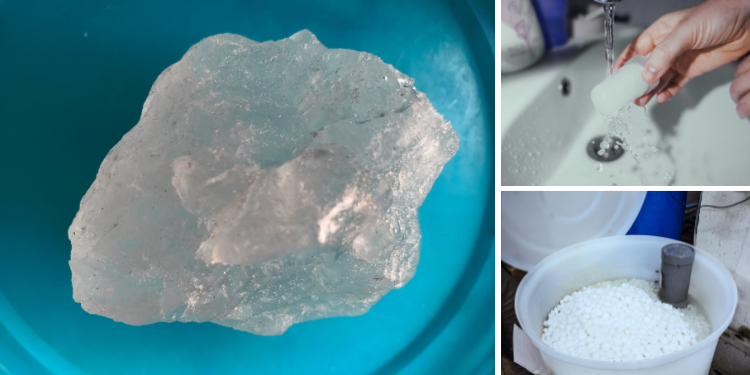




















The last thing anyone needs is more aluminum in their bodies, which is a major factor in memory loss.
You must have missed the part about minimal adverse health impact.
I suggest you further research Alum.
“Alum salt is a powerful water purification agent that has been used for centuries to treat water and improve its quality. When added to water, alum binds to the particles and forms larger clumps that can easily be filtered out.”
Read the last line of the above quote! Alum can be filter out with any impurities.
Agreed. I know you have some flak over this, but anything I can do to avoid aluminum intake is IMHO beneficial.
Powdered alum, besides being an effective flocculant to “purify” water, can be used in baking – reacting with baking soda to make CO2 which makes baked goods “rise”.
There are multiple ways to bake bread and purify water. If I have options, alum will not be among those. If I’m dying of thirst and I have access to only scummy water and alum – and no time/gear to boil/distill it – I’m using the alum.
NO, ms deaville, the last thing anyone needs is cholera, typhoid, or dysentery and literally shitting yourself to death. Personal filters are ok for one person for a weekend but when you have to provide the volume of water required for a family or group for weeks on end you have to get back to basics. Flocculation with alum, settling, and chlorination will give you drinkable water. Then some filtering with a large Berky to make sure you didn’t miss anything. This is a tried and true approach. Set yourself up to be able to run reverse osmosis if you feel the need and luxury to worry about aluminum or other trace dissolved compounds, but we are probably going to have to deal with situations we think only happen in third world countries. This article should be page one in your notes to yourself on dealing with SHTF.
A lack of pure water has killed a lot of people in austere settings and will continue to do so. I expect a spike if we ever see SHTF events en masse.
Alum enjoys widespread use, and we could certainly do a LOT worse than water treated with flocculants. The concern is for long-term use, and possible neurodegenerative effects precipitated (see what I did there?) by exposure to aluminum. Aluminum concentrations of treated water are almost always higher than that of the raw water when alum flocculation is part of the treatment process.
I believe that more people could build a still vs a reverse osmosis system, but both will remove aluminum salts from water. With either way, it’s advisable to have a few things to throw back in to replace some of the good things that were removed – a.k.a. remineralization. A pinch of pink Himalayan salt is said to be good, along with limestone, mineral drops, etcetera. That isn’t a comprehensive list.
I wouldn’t say the article needs to be page one, but it IS important as one of many methods useful in water purification and should be included wherever related information is kept. If there is anything that history has advised us, it is that the inflexible & unyielding & ignorant & unprepared will often perish first. Keep an open mind about ALL methods for water purification (including alum) and be flexible enough to use them as needed.
No thanks. I’m doing all I can to avoid aluminium.
They’re spraying us with it on a daily basis in the Uk.
Our entire food and drinking water systems are saturated with it. The last thing I’m going to do is use a deadly nerve toxin to purify water.
Its OK with me if you have concerns about alum, there are other options. Ferric chloride, lime/soda ash, polymers, even egg whites and prepaired clay suspensions have been used to build a floc that will drag most of the fine particles down and out of the water before filtering and chlorination . In some situations it even works better to use diffused air flotation to bring the particles to the surface and skim them off. Research the possibilities and see what works for you before we are in a critical situation.
The main point I want the readers to be aware of is the need to extend the life of your filters by pretreating the water that they have collected from a lake or stream.
I am shocked! But I am not trained in chemistry, micro-biology, etc.. You will have to explain this subject much more, pertaining to aluminum-presence, before I can understand it.
I am also double-shocked, because you did not list {such as in parentheses} any research studies to support your position(s). You appear knowledgeable about this subject matter; but you offered no technical support (research studies). Why is it that you failed to support your own stance in the debate you raise?
Certainly you are aware that aluminum is considered a “no-go”. Though I am a dummy; if you are really professionally sound in your assertions, you can list research studies that support your position. I could also add, “maybe not”, because sometimes the balance of health factors is unclear. Though I am a dummy (and I am a dummy on everything I read involving expertise that you assert in biology, microbiology, chemistry, etc.) AT LEAST OTHERS will cite professional references to research studies, WHICH YOU DID NOT DO. WHAT THE heck IS GOING ON WITH YOU?? Who in their right mind, would not cite at least one professional reference to support a viewpoint to dummies like me who cannot judge the same matter for lack of education. You didn’t. So I heard what you said; and will consider it when someone else more professional than you PROVES what you said (to the best that it may be proven); and even then I will delay, delay, delay.
So what do you think you really accomplished, when you did not submit to readers what you believe (and knowing that the vast majority of people are dummies like me?) Are you trying to insult me (for my dummy-ness?). I can read; and I do read professional articles all the time AND ALL OF THEM CITE REFERENCES THAT I READ. I DO appreciate the view you shared. It perks me to pay attention to others who may share something similar. But you didn’t include even one substantiating reference study. So, what does that make what you wrote worth? I mean, why would you bother to talk with idiots (dummies) like me? Am I supposed to believe you? OK, so I conclude you wanted to share what you know; and you didn’t view this site to be worthy of adding supportive documentation. I can get that; but at the same time you were not professional when sharing professional information. So I “jump you” on that; and I hope you will revise what you write on subjects that will be read, most likely, by dummies, like me. I’m sincere in that request.
radar, who did you want more info from me or the no alum commenters? Alum use for treating surface water has been standard for a long time. I also am aware of some peoples concern about aluminum in our diet ( I don’t use aluminum pots and pans). But when shit hits the fan, disease like those mentioned become an immediate concern where as metal effects on our system is more of over a lifetime concern. One of my main concerns is that there will be no resupply, the number of filters (that are made in a factory halfway around the world) that you have on hand is all there is and will not be available anymore. Therefore conserving them and streaching there useful life will be a good idea. We will be getting back to basics and coagulation, settling, rough filtering, followed by a really good final filter is basic. I keep alum, a filter that is marketed for filtering goats milk, extra filter pads of various densities, and my Berkey. I want to keep my Berkey going as long as I can. My chlorine is in dry form like is used in swimming pools. I have considered RO, but haven’t added it to my own collection. As for research sources, start with Wikipedia and Google searches. My position/opinions comes from working in city run water and wastewater plants and being licensed to work on peoples personal wells. I have also worked on a system that produced pharmaceutical grade water. Thank you for your interest and keep learning more.
Aluminum in ANY variant is absorbed by the body and accumulates over time.
It is toxic, and a leading suspect in the development of dementia. The author may be
knowledgeable regarding chemistry, but obviously quite remiss on the other facets
of biochemistry and impacts on health. The US FDA allows uses of aluminum in consumer
personal care products as well as in consumables like cake batters, pancake batters, and
other bakery products, Europe however does not. We should all be very cautious in taking advice regarding eating, or drinking anything as safe on face value. Do your own research,
and if in doubt–always toss it out ( the advice that is ).
Vic I agree with every thing you said. Please note that I offered alternative coagulants to use instead of alum. I am just not sure they will be available when SHTF and protecting my factory made filter is important to me. I don’t want anyone to take me at face value without checking things out and deciding on the risk factors for yourself. I know there is a controversy over aluminum consumption and I admit to being biased because I was part of an industry that used it routinely. When I balance things out in my mind I am more concerned that I will run out of factory made filters before I kill myself by ingesting alum. I am also very sure that there is a higher risk of water borne disease being ones undoing than alum consumption. Glad for each of you guys joining in, keep thinking about it, and keep some options open for yourself.
Dang doggit, just filter that scummy green pond water through a dirty bandana and bring it to a rolling boil, that will kill everything you need to worry about. And the main health hazard from aluminum is the aluminum wiring in 70s era home construction. Aluminum is also dangerous if your tinfoil hat slips off your head and over your eyes while driving.
Your approach is as valid as mine. Boiling is an option if you have the fuel.
I don’t drive with my tinfoil hat on, cant have everyone seeing the real me. I just use it when I feel I have to hide from everyone and them pesky cosmic rays.
( thanks for the giggle).
What about using alum to clear out sediment in an artesian well. Iron and rust and iron mites are in our granite. Of course once it settles to the bottom there’s no getting it out.
Talk to your local well drilling company, then a google search, and think along the line of a special filter.
I’m not going to make much of a comment to this article… It is interesting, and even the comments were interesting… Lots and lots of Do’s and Don’ts, Would’s and Wouldn’ts, Can’ts and Can’s… Now, all I have to do is weigh this information and make a decision on my own as to what I should do, or not do…. pretty much what everybody should do, make their own decision based on any and all information you have available to you… Live Long and Prosper…
Looks like interest in this subject is winding down so I will close with this comment. Neither the AWWA (american water works association, a trade group), the EPA, the FDA, or any regulatory agency that I know of will take an official position against the use of alum in water treatment. I am also very aware of good science based studies that suggest that aluminum intake can have adverse health effects. When SHTF you will have to make your own decisions, balancing a immediate problem and danger against things you might not want to do if things were normal times. At this time I would suggest that you want to keep your options open with several methods to gather, treat, and store drinking water.
And if there is anyone out there that takes any government statement as 100% true, you are clearly not a Viet Nam vet!
We offload a tanker truck of this stuff about every week where I work at but they aint using it for water purification, they are making another chemocal compund with it.
I have been using alum to make pickles for years. As did my mom and grandma.